
The Great Northern Railway (GNR) was a British railway company incorporated in 1846 with the object of building a line from London to York. It quickly saw that seizing control of territory was key to development, and it acquired, or took leases of, many local railways, whether actually built or not. In so doing, it overextended itself financially.

Monaghan is the county town of County Monaghan, Ireland. It also provides the name of its civil parish and barony.
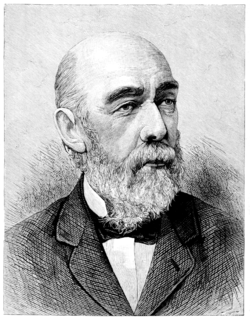
James Fergusson FRS was a Scottish-born architectural historian, mainly remembered for his interest in Indian historical architecture and antiquities. He was an important figure in the 19th century rediscovery of ancient India. He was originally a businessman, and though not formally trained as an architect, designed some buildings and decorative schemes.
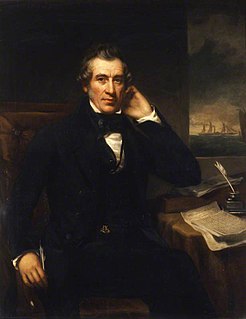
Sir William Fairbairn, 1st Baronet of Ardwick was a Scottish civil engineer, structural engineer and shipbuilder. In 1854 he succeeded George Stephenson and Robert Stephenson to become the third president of the Institution of Mechanical Engineers.
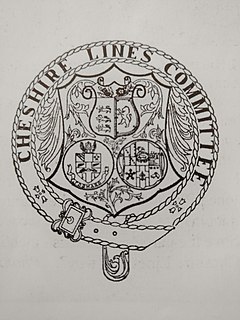
The Cheshire Lines Committee (CLC) was formed in the 1860s and became the second-largest joint railway in Great Britain. The committee, which was often styled the Cheshire Lines Railway, operated 143 miles (230 km) of track in the then counties of Lancashire and Cheshire. The railway did not get grouped into one of the Big Four during the implementation of the 1923 grouping, surviving independently with its own management until the railways were nationalised at the beginning of 1948. The railway served Liverpool, Manchester, Stockport, Warrington, Widnes, Northwich, Winsford, Knutsford, Chester and Southport with connections to many other railways.
Chief mechanical engineer and locomotive superintendent are titles applied by British, Australian, and New Zealand railway companies to the person ultimately responsible to the board of the company for the building and maintaining of the locomotives and rolling stock. In Britain, the post of locomotive superintendent was introduced in the late 1830s, and chief mechanical engineer in 1886.

Henry Alfred Ivatt was an English railway engineer, and was the Chief Mechanical Engineer of the Great Northern Railway from 1896 to 1911.

The Midland and Great Northern Joint Railway (M&GNJR) was a railway network in England, in the area connecting southern Lincolnshire, the Isle of Ely and north Norfolk. It developed from several local independent concerns and was incorporated in 1893. It was jointly owned by the Midland Railway and the Great Northern Railway, and those companies had long sponsored and operated the predecessor companies.

Peterborough railway station serves the city of Peterborough, Cambridgeshire, England. It is 76 miles 29 chains (122.9 km) down the East Coast Main Line from London King's Cross. The station is a major interchange serving both the north–south ECML, as well as long-distance and local east–west services. The station is managed by London North Eastern Railway. Ticket gates came into use at the station in 2012.

The Howth Tram on the Hill of Howth Tramway was a tram which served Howth Head, near Dublin, Ireland. The termini were at Sutton railway station, by the entrance to the peninsula, and Howth railway station by the village and harbour of Howth.
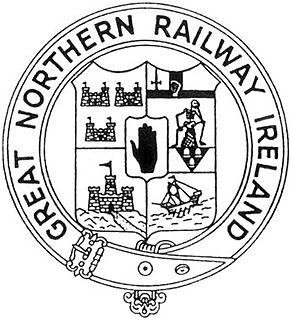
The Great Northern Railway (Ireland) was an Irish gauge railway company in Ireland. It was formed in 1876 by a merger of the Irish North Western Railway (INW), Northern Railway of Ireland, and Ulster Railway. The governments of Ireland and Northern Ireland jointly nationalised the company in 1953, and the company was liquidated in 1958: assets were split on national lines between the Ulster Transport Authority and Córas Iompair Éireann.

Malahide railway station serves Malahide in Fingal.
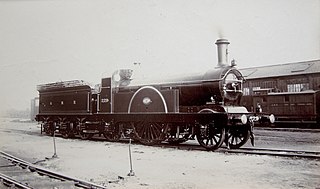
Archibald Sturrock was a Scottish mechanical engineer who was born at Petruchie, Angus, Scotland. He was locomotive superintendent of the Great Northern Railway from 1850 until c. 1866, having from 1840 been Daniel Gooch's assistant on the Great Western Railway.

Thomas Chambers Hine was an architect based in Nottingham.

The Louth to Bardney Line was an English railway line built by the Louth and Lincoln Railway Company, in Lincolnshire, England. It opened in stages between 1874 and 1876, after serious difficulties in raising subscription capital, and following alteration to the planned route. It was hoped to serve large reserves of ironstone along its route, but the deposits were not as large as hoped, and the line was never financially successful.
The Londonderry and Enniskillen Railway (L&ER) was an Irish gauge railway in Ireland.
Henry Conybeare was an English civil engineer and Gothic revival architect who designed two notable churches and greatly improved the supply of drinking water to Mumbai.

Alfred E. Stone was an American Architect. He was a founding partner of the Providence, Rhode Island, firm of Stone, Carpenter & Willson. Mr. Stone was best known for designing many prominent Rhode Island buildings, including the Providence Public Library, Union Station, buildings at Brown University and the University of Rhode Island, and many private homes.
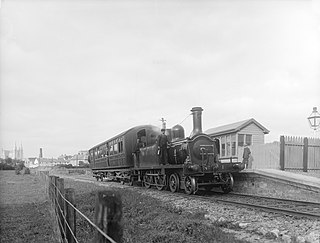
The Castleblayney, Keady and Armagh Railway (CK&A) was an Irish gauge 5 ft 3 in railway in Ulster. It linked Armagh in County Armagh with Castleblayney in County Monaghan. The Armagh – Keady section was opened in 1909 and closed in 1957. The Castleblayney – Keady section was opened in 1910 and closed in 1924.
Sancton Wood was an English architect and surveyor, known for his work on railway buildings.

















